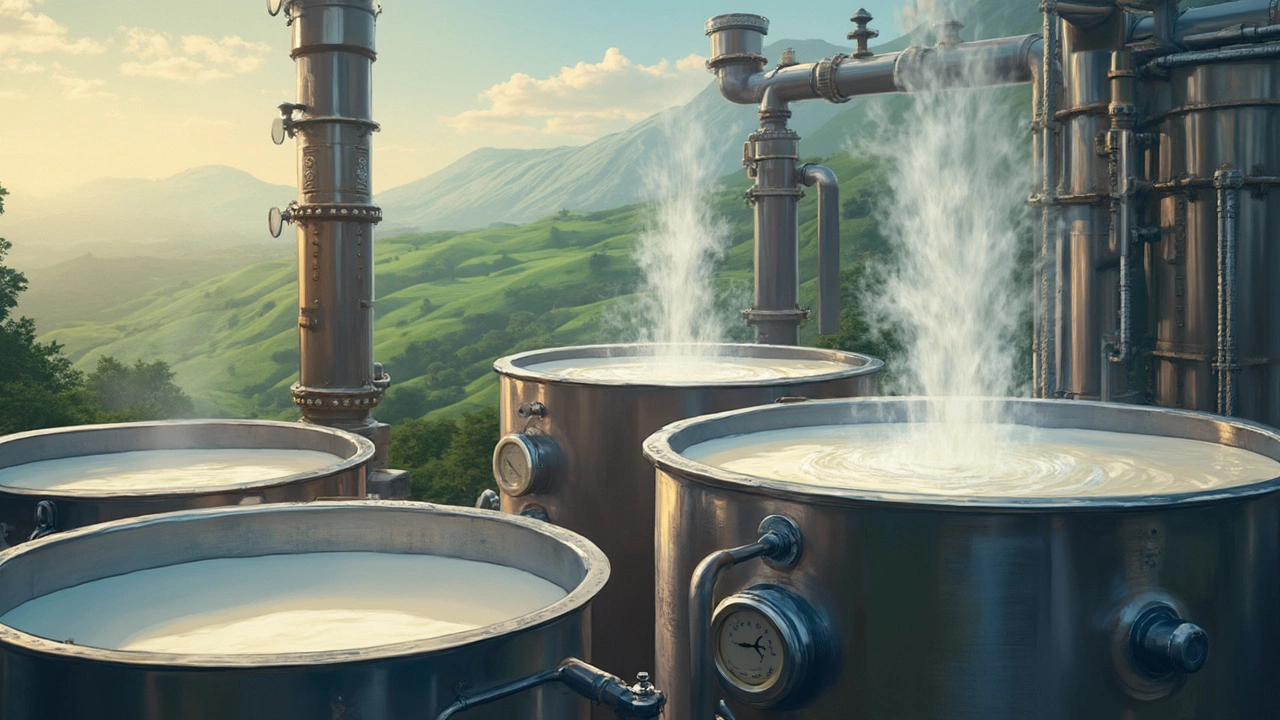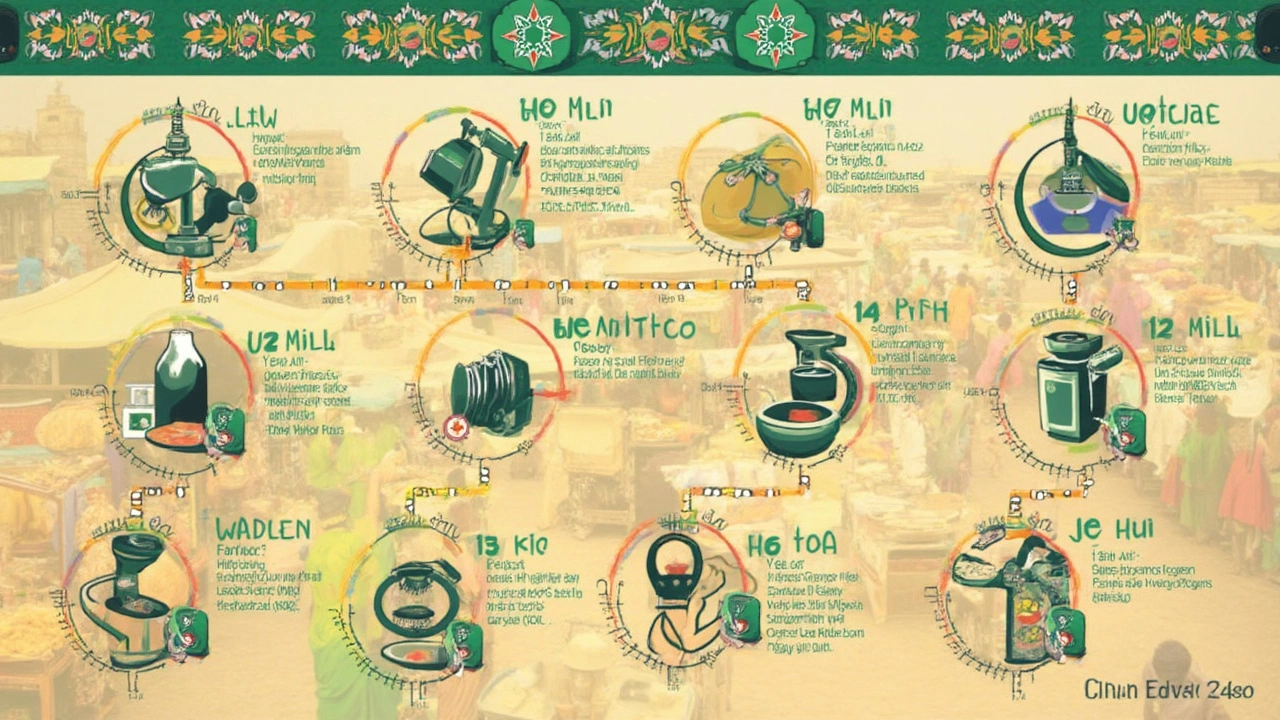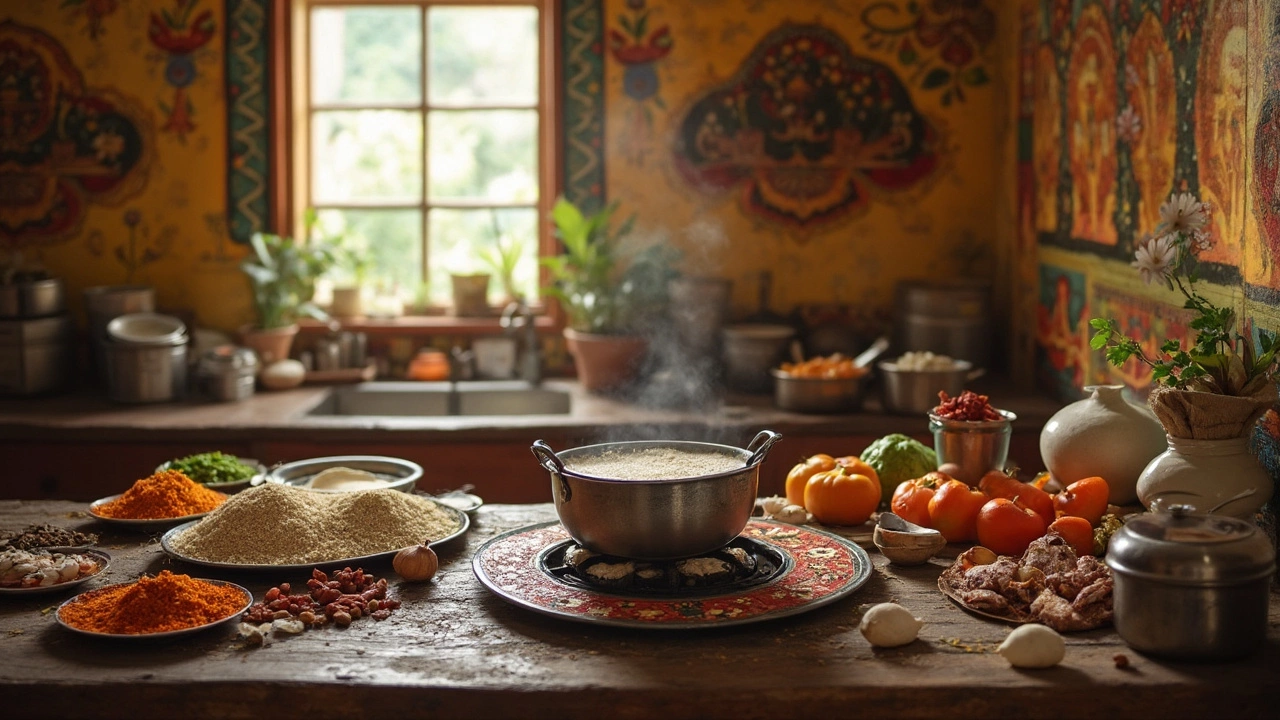Ever wonder how food goes from raw materials to the stuff you eat every day? It's all about these things called unit processes. These are the steps in food production where something specific happens, like heating or mixing, to change the raw ingredients into something you can actually eat.
Take pasteurization, for example. It's all about heating milk just enough to kill off any nasty bacteria but not ruin the taste. Pretty cool, right? Understanding how these processes work can help you make sense of what's happening with your food before it hits your plate.
- What Are Unit Processes?
- Example: Pasteurization
- Interesting Facts About Unit Processes
- Practical Tips for Food Processing
- The Role of Technology in Unit Processes
What Are Unit Processes?
Alright, so let's break down what unit processes are in the world of food production. It's simple, really. Every time you munch on a cookie or sip some juice, there's a whole chain of operations that got it there, and these operations are called unit processes. Think of them as the essential steps or building blocks where something specific happens to change the state of raw food materials.
Each unit process involves a distinct operation. It could be something like heating, cooling, drying, or even mixing different ingredients. They all play a part in making sure food is safe to eat and has the right taste and texture.
For example, in baking bread, there's mixing (to combine the ingredients), fermentation (to let the dough rise), and baking (to cook it). All these are unit processes used to transform flour, water, and yeast into a loaf of bread.
Now, you might be curious about how they affect the final food quality. The goal here is to control the conditions like temperature, pressure, and time to get the best result. It's a lot of science mixed with a bit of art.
Here's a neat fact: Some food processing facilities even use automated systems to monitor these processes constantly. This ensures consistency and reduces the risk of human error, making the food not only delicious but also safe.
Understanding these processes is like getting a sneak peek into the behind-the-scenes of food production. It makes one appreciate that every bite we take is the result of a well-organized series of steps.
Example: Pasteurization
Alright, let's talk about pasteurization. Louis Pasteur, the guy this process is named after, developed it back in the 19th century. It's all about making milk and other products safe to consume by getting rid of harmful bacteria. This is done by heating the product to a certain temperature for a specific amount of time.
So, how does it really work? Well, when milk is heated to at least 161°F (about 72°C) for 15 seconds, it becomes pasteurized. This is often called the 'High Temperature Short Time' method. But it's not just about cranking up the heat. If it's too high, you might end up with something that tastes cooked. Nobody wants weird-tasting milk.
This method is super important not just for safety but also for shelf life. By getting rid of bacteria, pasteurization helps extend how long milk and other dairy products stay fresh. It's one of those basic unit processes that keeps things ticking in the world of food processing.
Just so you know, pasteurization isn't a one-size-fits-all deal. Different foods need different temps and times. For instance, fruit juices might go through a slightly different pasteurization process to keep the flavors spot on while still doing away with unwanted bacteria.
Here's a fun fact: while pasteurization is mostly about making food safe, it's also been key in enabling mass production and distribution. Thanks to this nifty process, products like milk can be shipped far and wide without going bad too soon.

Interesting Facts About Unit Processes
Dive into the world of unit processes in food processing, and you'll find some pretty surprising facts! Did you know that Louis Pasteur didn't even come up with pasteurization to make milk safe for drinking? Yeah, crazy, right? He was actually looking at how to keep wine from spoiling, and it turned out to be a game-changer for milk and other foods too.
Another fascinating tidbit is that freezing is one of the oldest food processing techniques around. Ancient folks figured out that freezing food keeps it from spoiling ages before freezers were even a thing.
The concept of “controlled spoilage” might sound odd, but that's exactly what fermenting is. Fermentation isn't just about making beer and wine; it also gave us foods like yogurt and sauerkraut. There's science behind those jars bubbling away!
"Food processing is not about what happens in the factory alone; it’s about understanding the nature of food itself." - Dr. Harold McGee, food scientist and author.
Here's something to chew on: unit processes are more efficient than ever thanks to advances in technology. Machines today can handle precise tasks that humans used to manage by hand, making production safer and more consistent.
- Food industry stats show that pasteurization reduces the amount of harmful bacteria in milk by 99.9%.
- More than half of the world's canned food uses sterilization, a type of unit process involving heat at temperatures above 100°C.
- Automation in food factories can increase production speed by around 30%, thanks to optimized production lines.
So next time you're biting into your favorite snack, remember there's a lot more going on behind the scenes. These unit processes shape what ends up on your plate.
Practical Tips for Food Processing
Jumping into food processing can seem like a big task, but there are a few simple steps and tricks that can make things smoother. Whether you're in a big company or just tinkering in your kitchen, these tips can help ensure a safe and efficient process.
First up: sanitation is key. Always keep those hands, tools, and surfaces clean to avoid contamination. It might seem like a no-brainer, but you'd be surprised how often this gets ignored. And when dealing with pasteurization or any other unit process, having a clean setup is non-negotiable.
When you're processing, keep an eye on temperature. Heating or cooling ingredients to the right temperature isn't just about safety—it's also about getting that perfect texture and taste. For instance, when you're pasteurizing milk, the usual target is around 72°C (161°F) for about 15 seconds.
If volume or scale changes, adjust your times and temperatures accordingly. What works for a small batch might not cut it for larger quantities. So, make sure to know your food processing scale!
Investing in good-gear pays off in the long run. It doesn't need to be the fanciest on the market, but reliable equipment can make a world of difference.
- Storage: Keep your raw and processed foods in appropriate conditions. Raw ingredients often need one type of storage, while processed items might need another.
- Record Keeping: Jot down things like processing times and temperatures, especially if you're experimenting with new food processes. It's a quick way to spot patterns or potential issues.
- Consistent Checks: Regularly test your end products for quality and safety. Adjust your process as needed based on these tests.
For those working on a larger scale, here's a nifty little table with some common temperature guidelines:
| Process | Temperature | Time |
|---|---|---|
| Milk Pasteurization | 72°C (161°F) | 15 sec |
| Meat Cooking | 70°C (158°F) | Varies by cut |
| Canning | 100°C (212°F) | 10-15 min |
Staying informed about the latest technologies and practices in the food industry can also offer new ways to improve your processes. So keep learning and experimenting!

The Role of Technology in Unit Processes
Technology is like the secret weapon that makes food processing better, faster, and safer. Think about it: without those high-tech machines and tools, producing consistent and safe food at such a large scale would be almost impossible.
One big example is automation. By using automated systems, factories can crank out food products way faster than if we relied on humans alone. Machines don't get tired or make mistakes like people sometimes do.
Another cool thing is sensors. These little gadgets make sure everything's running smoothly. For instance, in pasteurization, sensors keep track of the temperature to ensure milk is heated just right without cooking it. This makes the whole process more efficient and reliable.
Then there's the role of software. With advanced software, companies can monitor and control the entire production process in real-time, catching any hiccups before they become big problems. Plus, it helps in analyzing data to improve future production runs.
Technology isn’t just about making more food; it’s also about making it safer. New tech like ultraviolet (UV) treatment is being used as an alternative to chemical disinfectants, killing harmful bacteria without leaving any residues. That’s a win-win for health and the environment.
Here's a quick look at some of the high-tech methods being used:
- AI and Machine Learning: For predicting maintenance needs and improving production efficiency.
- Robots: Used in tasks like packing and sorting to reduce human error.
- Blockchain: A way to track food items from the farm to your table, making sure IDs and origins are legit.
With all these advancements, the future's looking pretty good for how we process food. More safe, more efficient, and hopefully just as tasty.
